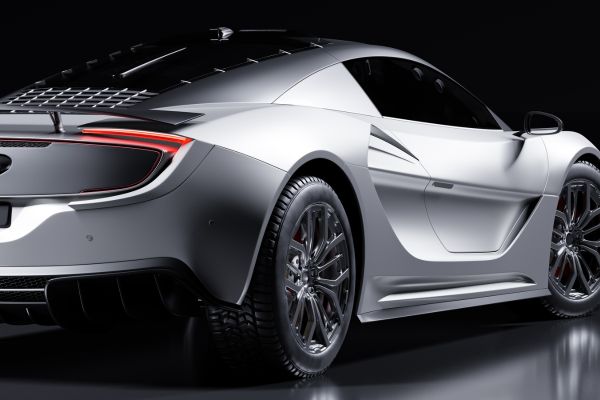The automotive industry is undergoing a profound transformation, ushering in a new era of sustainable and electrified mobility. At the forefront of this revolution are electric vehicles (EVs), offering a compelling solution to combat climate change and reduce carbon emissions. Among the diverse array of EVs, electric sports cars stand out as the epitome of performance and driving excitement, captivating enthusiasts with their breathtaking acceleration and eco-conscious engineering. As the automotive landscape evolves, governments across Europe have recognized the pivotal role they play in shaping the future of electric sports cars.
In this era of rapid electrification, government policies have emerged as powerful catalysts, fueling the adoption and growth of electric sports cars in Europe. Policymakers have devised a comprehensive set of strategies, ranging from emission targets and regulations to financial incentives and infrastructure development, all designed to accelerate the transition to electric mobility. These policies not only stimulate innovation and technological advancements in the electric sports car segment but also create an ecosystem that fosters a culture of sustainability and driving excitement.
This article explores the multifaceted impact of government policies on the future of electric sports cars in Europe, shedding light on the progressive initiatives that drive the electrification revolution. By delving into the regulatory landscape, financial incentives, charging infrastructure expansion, promotion of research and development, and the nurturing of a culture that embraces electric mobility, we uncover the far-reaching implications of government policies on the high-performance electric driving experience. As we embark on this electrifying journey, the future of electric sports cars in Europe promises a thrilling fusion of performance and sustainability, epitomizing the marriage of innovation and driving pleasure in the automotive world.
Emission Targets and Regulations
To combat the growing threat of climate change, European governments have set ambitious emission reduction targets. One of the key strategies to achieve these goals is to incentivize the adoption of electric vehicles, including electric sports cars. In recent years, several European countries have introduced stringent emission regulations and vehicle standards, encouraging automakers to prioritize the development and production of electric models. These policies have spurred the introduction of a wide range of electric sports cars with cutting-edge technologies, appealing designs, and exceptional performance.
Moreover, government regulations have set deadlines for phasing out internal combustion engine vehicles, signaling a clear intent to transition towards electric mobility. Automakers have responded by announcing plans to shift their focus towards electrification, committing to electric sports car lineups and investing in electric vehicle infrastructure. As governments continue to raise the bar on emission standards, the future of electric sports cars in Europe looks increasingly promising, with governments and automakers working hand in hand to shape a more sustainable and electrifying automotive landscape.
Financial Incentives and Subsidies
Financial incentives and subsidies play a vital role in bolstering the adoption of electric sports cars in Europe. To encourage consumers to make the switch to electric mobility, governments have introduced a variety of incentives, such as tax credits, reduced registration fees, and purchase subsidies for electric vehicles. These financial benefits not only make electric sports cars more attractive to potential buyers but also level the playing field with traditional gasoline-powered sports cars in terms of cost.
Furthermore, some European countries have implemented policies that offer preferential treatment to electric vehicles, such as access to restricted driving zones and exemptions from congestion charges. This approach encourages consumers to consider electric sports cars as a viable option for their daily commuting and driving needs. By making electric sports cars more financially accessible and appealing, these policies are instrumental in driving the adoption of high-performance electric vehicles and contributing to a cleaner and greener automotive future.
Expansion of Charging Infrastructure
One of the critical challenges to the widespread adoption of electric vehicles, including electric sports cars, is the availability of a robust charging infrastructure. European governments have recognized the importance of charging infrastructure in promoting the transition to electric mobility and have initiated comprehensive plans to expand charging networks across the continent. This includes the installation of public charging stations in urban centers, highways, and key transportation hubs, as well as incentives for private businesses and property owners to set up charging facilities.
The development of a dense and reliable charging infrastructure is essential for the widespread acceptance of electric sports cars, as it alleviates range anxiety and provides drivers with the confidence to undertake long journeys. Additionally, governments have collaborated with automakers to implement fast-charging technologies, reducing charging times and making electric sports cars more appealing to performance-oriented drivers. As the charging infrastructure continues to expand, the future of electric sports cars in Europe becomes more promising, creating an ecosystem where high-performance electric mobility is both accessible and practical.
Promotion of R&D and Innovation
European governments have fostered an environment that encourages research and development (R&D) in the field of electric mobility, stimulating innovation and technological advancements in electric sports cars. Governments have provided funding and grants to support R&D projects related to electric vehicle technologies, battery advancements, and charging infrastructure solutions. This commitment to innovation has accelerated the pace of electric sports car development, enabling automakers to introduce cutting-edge features and performance enhancements.
Moreover, European governments have promoted collaboration between academia, research institutions, and the private sector to drive innovation in electric mobility. These partnerships have resulted in the development of advanced battery technologies, lightweight materials, and efficient powertrains, all of which contribute to the performance and range capabilities of electric sports cars. By nurturing a culture of innovation, European governments are playing a crucial role in shaping the future of electric sports cars, ensuring that these high-performance machines continue to push the boundaries of driving excitement and sustainability.
Fostering a Culture of Electric Mobility
Beyond policies and incentives, European governments have been proactive in fostering a culture of electric mobility. Public awareness campaigns and educational initiatives have been launched to inform consumers about the benefits of electric vehicles, dispel myths, and raise awareness about the positive impact of electric sports cars on the environment. These efforts aim to shift public perception and attitudes towards electric mobility, encouraging more consumers to consider electric sports cars as a viable and exciting option for their driving needs.
Furthermore, governments have supported the organization of electric vehicle events, motorsport races featuring electric sports cars, and showcases that allow consumers to experience the thrill of electric high-performance driving. By exposing the public to the capabilities and excitement of electric sports cars, governments are instrumental in shaping a culture that embraces sustainable and exhilarating driving experiences.
Conclusion
As Europe embarks on a transformative journey towards a sustainable and electrified automotive future, government policies are playing a pivotal role in shaping the trajectory of electric sports cars in the region. Emission targets and regulations have catalyzed the introduction of a diverse range of high-performance electric vehicles, showcasing the potential of electrified motoring. Financial incentives and subsidies have made electric sports cars more financially appealing to consumers, leveling the playing field with their gasoline-powered counterparts.
The expansion of charging infrastructure is alleviating range anxiety and providing drivers with the confidence to embrace electric mobility, while the promotion of R&D and innovation has accelerated the development of cutting-edge technologies in the electric sports car segment. Moreover, the fostering of a culture of electric mobility is shifting public perception and attitudes, creating a more receptive and enthusiastic audience for high-performance electric vehicles.
As governments and automakers collaborate to shape a sustainable and exhilarating future of electric sports cars in Europe, the automotive landscape is witnessing a revolution that transcends traditional notions of high-performance motoring. The fusion of performance, innovation, and sustainability is redefining the very essence of electric sports cars, offering a tantalizing glimpse of a future where speed, thrills, and eco-consciousness coexist harmoniously. With the combined efforts of policymakers, automakers, and driving enthusiasts, the electrified era is poised to usher in an exciting new chapter in the evolution of high-performance motoring in Europe and beyond.



